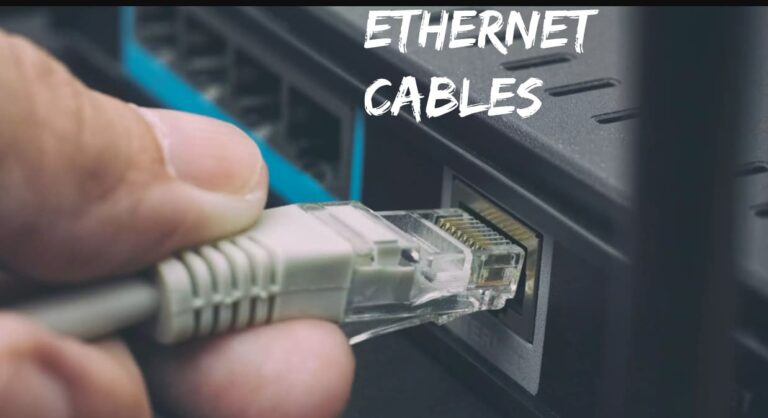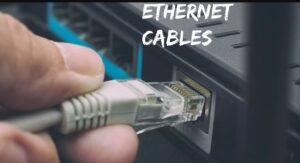The Internet is one of the essential parts of our daily life, especially after the Pandemic. People need it for different purposes starting from online studies, to gaming, to streaming videos, to online work! The mix of technologies needed to connect various Internet-suitable devices is known as Ethernet. Hence, the compatible connectives are Ethernet cables or Ethernet cabling systems. Here we will see how you can choose an Ethernet cable and how to choose.
What you will see here ?
About Ethernet Networking
Ethernet networking was originated back in the 1970s. Later, they were standardized and made commercially available in the early 1980s. From then to till now Ethernet’s is a preferable option among the other competing networking technologies in the past few decades. It is due to its capability to adapt to the changing needs, offering stable and fast network speeds, adoption of new hardware, and more.
You can find different cable designations in the market meant to be used for Ethernet networking. Their right choice of cable is important. It can affect the overall capabilities of a network either it is just for web browsing, media streaming, or gaming purposes that are common in homes.
Where it is preferred?
An ethernet-based wired network connection is mostly preferred among businesses and individuals. It is due to its many benefits over Wi-Fi. Now to get the best out of a network either LAN or WAN the backbone or cabling system used is of much more importance. So the procedure to choose Ethernet cable is very important.
Many IT networks lack proper cabling systems and hence it matters a lot to their performances. Your requirements to use the Internet matters the most to select the best affordable plan from your ISP if you are on a tight budget.
Do you want to do activities like moving larger files or streaming high-quality multimedia?
If yes, then you need to have a stable internet connection that supports higher speeds to handle all such tasks. So here high-end routers that support faster network speeds are not sufficient.
You need to also set up your network with a more capable cabling system. Hence, prefer to use one among the recent versions to get ready for future upgrades. Cables with different high-end network devices can together ensure a stronger internet connection.
How to Select the Ethernet Cable Wisely?
The latest generation Wi-Fi can support up to 11 gigabits per second, but. There are many limitations of wireless networks like interference from objects or walls in between two devices. Additionally, there are chances of range issues, packet delays/loss, or slower connections, and more.
So, Ethernet is dominating the wired networking industry all over the world. It is in use among different high-speed connections to billions of personal devices and datacenters. They are also dominating the network infrastructures of millions of businesses and homes. These cables generally need RJ45 headers or Ethernet ports to connect our computer devices with a wider internet via a router.
There are many factors to consider to choose Ethernet cable /cabling system for your infrastructure needs:
1) Categories/Types
Cat, the technical term is a short form of Category. These days you can find below types of cable options to be used for Ethernet connectivity;
Cat 8
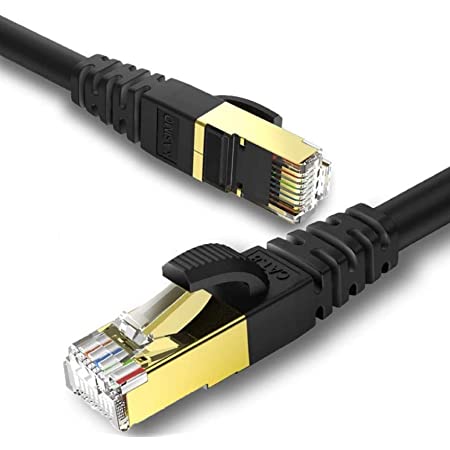
A cable of this standard can support maximum transfer speeds of 40 Gbps to 30 meters and a frequency of 2000 MHz. It supports up to two connectors so you can use three different cables with a combined length of 30 meters. You do not need a connector mess like that of Cat 7 while setting up Cat 8 cables that support the latest IEEE standards.
Cat 7a
These Ethernet cables come with the highest-specifications but support few networking hardware options. By using these cables you can find a big improvement of about 50% in the overall bandwidth than Cat 7 but, you need to pay more to own Cat7e. After all, both cable standards support 40 Gbps Ethernet connections to 50 meters in length.
Cat 7
These are made with high extensive shielding. They are also thicker to provide a high level of resistance against interference and cross talk. The overall specs of Cat 7 in terms of distance and speed match almost with Cat6a (supports 10 Gbps over 328 feet). It was noticed that Cat7 is capable to deliver about 40 Gbps even over 164 feet. These cables are highly preferred to setup Ethernet networks in data centers and large organizations.
Cat6a
It is an advanced version of Cat6 cabling having better specifications. These can support a maximum transfer speed of 10 Gbps to about double the distance i.e. over 328 feet than what Cat6 cables are capable to do. So these cables are best to cover larger areas where devices are placed over long distances and need to be connected.
Cat6
To enhance the speed limits of Cat5e cables i.e. 1 Gbps, Cat6 can allow maximum transmission speeds till 10 Gbps. These are offering almost zero interference due to much better insulation features. One downside of using this cabling system especially on larger networks is these cables can support 10 Gbps speed to 164 feet.
Cat5e
Businesses with a tight budget for network infrastructure can find these cables as an economic option. However, this cabling system can transfer around 1 Gbps till 328 feet, hence slowest among the modern Ethernet cables. Due to less interference, it works well to lessen transmission errors till these distances. It is a viable option for a less intensive and smaller IT network.

How to choose the right ‘Cat’ Cable?
Many home users prefer to have Ethernet routers in their home that supports speeds from 10-100 megabits to Gigabit. You can use either Cat 5, Cat 5e, or, Cat 6 to support Gigabit Ethernet.
Cat 5e is still doing a great job to satisfy people who are high-speed enthusiasts. In comparison to Cat 5e, Cat 5e includes more stringent specifications for system noise and crosstalk. So there will be fewer possibility errors! Generally, Cat 5e or Cat 5 wire is used to set up home networks. Both look very similar in their appearance.
Cat 5 today is not a recognized standard now and even not a perfect option to be used on the Gigabit network. The Cat 5e can avoid interference and gives reliability when Gigabit Ethernet pushes its limits to deliver higher speeds. Also, Cat 5 cable of around 100 feet will cost less than $10 while the same length of Cat 6 goes over $11.
OR
The Cat 6 is comparatively known to provide more reliable performance at higher internet speeds. You can also mix and match Cat 6 with others since these are backward compatible and supports Cat 4. By the way, both Cat 6 and Cat 4 are dissimilar from the inside and comes with different labels. Cat 6 is well-certified to support up to 10-Gigabit of speeds by pushing its limits. Cat 6 needs more care during the installation since these are more insulated and are more tightly twisted, conductors. So it needs more precision of one to cut these cables.
Cat 7 and Cat 8 -Definitely, there are also options of Cat 7 and Cat 8 for even more speeds like 40-Gigabits. If you are setting up a new Ethernet network then prefer to spend a bit more to have Cat 6 or Cat 7/8(optional) to be future-ready from now! You can find backward compatibility in every category. Modern cables like Cat8 or Cat 7 supports great bandwidths. They also ensure more shielding for far better stability and cleaner connections than Cat5 standards. Thus, offering lower features and speeds but are more economic.
2) Standards
The performance of multiplayer games that need a high-speed network can affect much even with a single millisecond of lag. Ethernet connectivity can give you a better experience than their wireless alternatives. Depending on the compatibility of cables about the range and speed different standards are there;
10Base-T – These are twisted-pair cables that support the 10-Mbps standard. They use modular connectors like RJ45 to attach with devices and set up a network. It is a highly popular kind of Ethernet. Their patch cables are normally pinned to the 568B or EIA/TIA 568A standard.
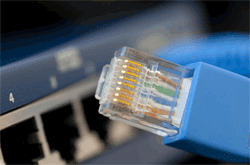
1000Base-T – The standard means these cables can transfer about 1 Gbps of data over a maximum distance of 100 meters. It uses a five-level coding scheme and 4 pairs of balanced CAT-5 copper cabling. So it is a specification to use copper wire (IEEE Standard 802.3ab) for Gigabit Ethernet.

100Base-FX – These are fiber optic cables that use the Fast Ethernet standard to support network speed up to 100 Mbps.
100Base-TX – It is a standard to use Category 5 UTP/STP cables based on Fast Ethernet for 100 Mbps connections.
3) Application
Cables can also be categorized depending on your Intended application or use;
General Communication – They offer networking and data transmission among controllers, PCs, and others.
A/V (Audio/Visual) – These types of cables are best to add any multimedia equipment to the display or computer.
Telecommunications – These cables are formed to replace or extend the cables used on handsets and telephones.
Extenders – You can use these cables to increase the length of any other cable.
Computer – These cables are good to be used to connect any peripheral devices like monitors, printers, hard drives, and more to the computer.
4) Design
Usually, Ethernet cables include wires inside that are twisted together. These types of cables are popular after fiber-optic cables in speed deceleration and max supportive length. These Twisted pair cables can be further categorized into;
SFTP or FTP (Foiled Twisted Pairs) – Here foil shield is used to cover or protect the twisted wires. These cables are known to get a better connection, improved connectivity, and less noise.

SSTP or STP (Shielded Twisted Pairs) – Inside these cables, the twisted wires are protected by braided and robust shielding. A conductive substance like copper is used as a covering. It helps improve connection quality and noise reduction.

UTP (Unshielded Twisted Pairs) – These cables lack any intertwined or foil covering. So you might not get good signal strength and there is a potential risk for crosstalk. UTP cables are flexible to use but manufacturers find them a bit expensive to produce than others.
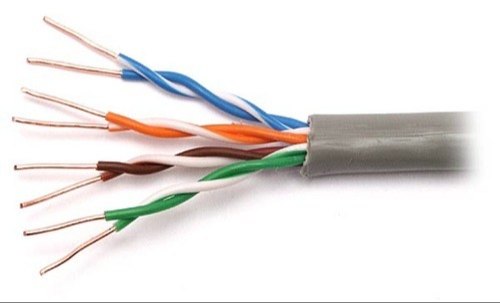
An Outlook on Different Ethernet Connectors
Different connector types can be used in Ethernet cabling system;
RJ connectors – These are also known as modular connectors. The connectors are made to be used for serial applications and telecommunications.
BNC connectors – They are also known as bayonet-style locking connectors. These are common to connect third-party monitors, older devices, or A/V applications.
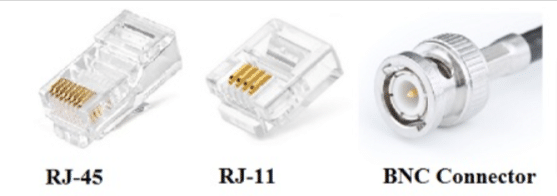
USB connectors – These are available in different configurations and sizes.

DB connectors – You can find many pin arrangements in this kind of connectors. These are intended to connect computer peripherals.

There are multiple gender configurations for Ethernet cable connectors to choose Ethernet cable. Plugs or Male connectors consist of protrusions that can be joined to a receptacle or female connector. So the two ends of a network cable can be terminated with either Male-Male, Female-Female, or Male-Female configurations.
Summary
Every business or firm needs a different network setup. It can be made efficient possible by choosing the right cabling solutions. A wide range of choices is available in the market at present. The most vital factor about selecting the cables is to give preference to the network distance that needs to be covered among other needs.
You can now connect faster-wired internet networks even to the systems that lack dedicated Ethernet ports. It is due to the presence of different kinds of adapters and cables available in the market.
We can use Ethernet as connective branches amid wide-area networks (WAN) and local area networks (LAN).
Besides, they also allow connections with international exchanges and Internet service providers.
The number after ‘Cat’ denotes the specification version that the cable can support. So bigger the figures indicate higher frequencies (MHz) and faster speeds. So the newer the cable that you buy for higher bandwidths, connections are more stable, and higher download speeds will be guaranteed.
Transmission speeds get slower with the increase in the length of the network cables. Hence, the reason Ether cables come with two-speed ratings, one with 100 meters and another at 10-30 meters.
Here is a comparison table of different Ethernet cables that we generally use in practice till now i.e. from Cat 3 to Cat 8;
| Category | Max compatible Bandwidth | Max supportive Transmission speeds | Shielding |
| Cat 8 | 2K MHz | 40 GBPS till 30 meters | Shielded |
| Cat 7a | 1K MHz | 100 Gbps till 15 meters | Shielded |
| The Cat 7 | 600 MHz | 100 Gbps till 15 meters | Shielded |
| Cat 6a | 500 MHz | 10 Gbps till55 meters | Shielded |
| Cat 6 | 250 MHz | 10 Gbps till 55 meters | Unshielded/Shielded |
| The Cat 5e | 100 MHz | 1K Mbps – 1 Gbps | Unshielded |
| Cat 5 | 100 MHz | 10-100 Mbps | Unshielded |
| Cat 3 | 16 MHz | 10 Mbps | Unshielded |
By the way, Cat 1, Cat 2, and Cat 4 are not Ethernet standards in technical terms and they are of no use at present. Thus, wired Ethernet networks are the most stable and fastest means to get connected to the Internet at present in this Wi-Fi era. At least, help to optimize your network performance!
Final Thoughts
In terms of network connectivity, Ethernet cables are much preferred options and are in practice for the past 4 decades. You can also connect two computers directly using the twisted cable design. Ethernet cabling setup can help you to transfer data constantly and seemingly over your personal or inter networks.
Are you not want to compromise with the quality of service or slower internet speeds? If yes, then do need to first have an idea about the different Ethernet cabling options before choosing the best as per your needs.
The speed of the internet matters the most on two main factors, i.e. compatibility of devices or cables connected to it. So if you are on a fast internet connection like 1 Gbps then you need to have the right idea about the right cable system to be used with it. Your aim here is to ensure effective outputs from the available infrastructure in your budget.
However, you do not bother to choose ethernet cable ,much in case you have some megabits of speed, in this case, you can even go with an inexpensive Cat 5 or the latest cables.
In this way, if you have the right idea about the speed of the internet connection then you can better make such decisions to avoid future hassles.
The current trend is to use Cat 6 or newer Ethernet cables since they come with shielding or are covered with grounded foil. So these protections work best to lessen electromagnetic interference or other distortions.
The foil wrapping is to well cover the twisted pair of wires present inside the network cable. It is to help reduce signal pollution or “crosstalk†among them. You can also find some high protected Ethernet cables in the market that has an additional inner layer of foil shield inside the cable sheath.
Do it right, and choose Ethernet cable smartly to get good cables as per your need either for business or personal purposes!


